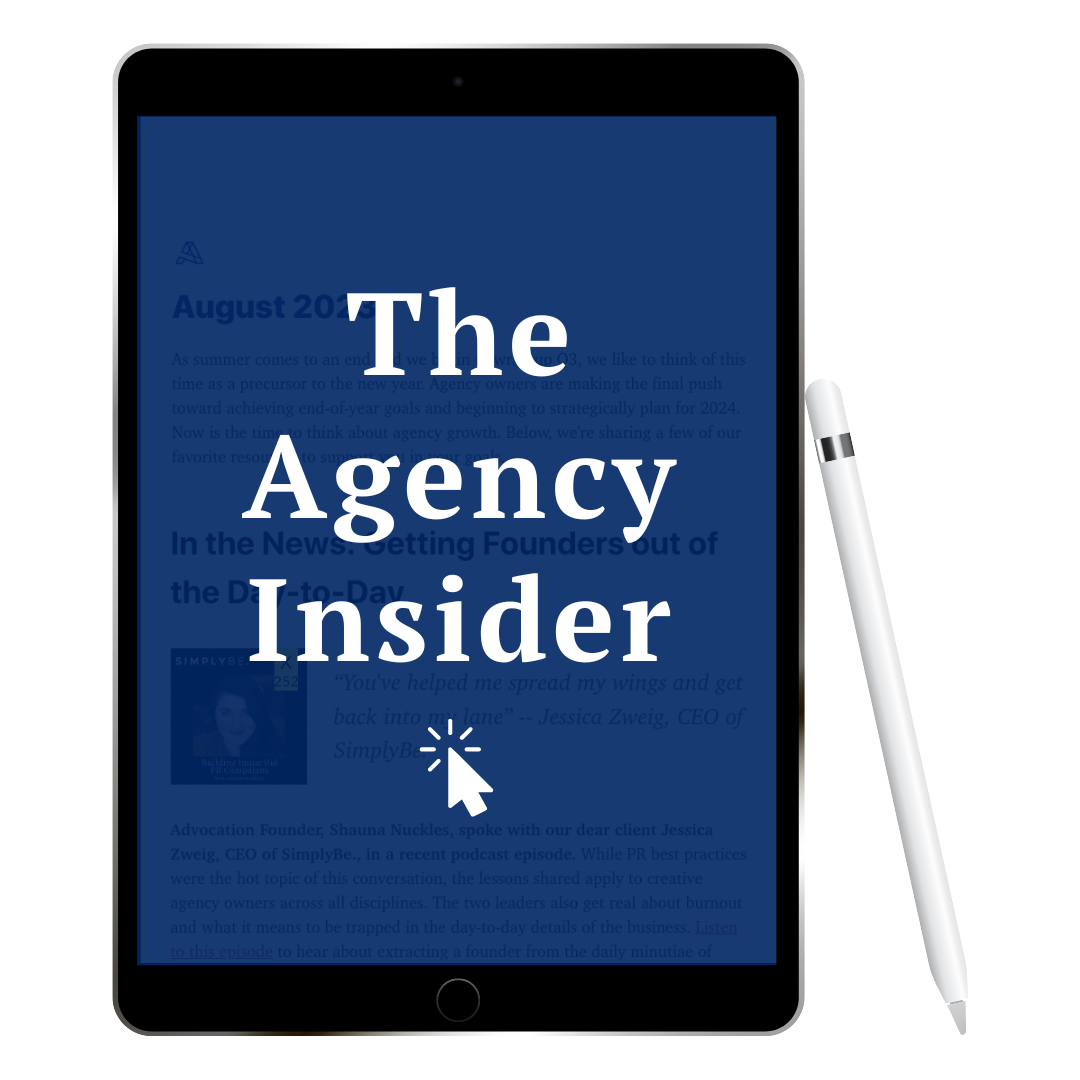
Hi, we're Advocation.
We solve the biggest operational challenges that agencies face. If you're looking for support to carry your PR, creative or digital firm through its next stage of growth, we're the partner you've been looking for.

Get The Agency Insider
Sign up to receive a monthly behind-the-scenes look at what we're seeing inside of the creative & digital agencies we work with.
Let’s de-stress your agency, together
We work with boutique and mid-sized creative agencies to solve their biggest operational challenges. Every strategy, tactic and service we provide is centered around the ultimate goal of decreasing friction to increase both profit and joy for the agency owners, executives and employees we support.
Here's how we can help:

01
Elevate Agency Operations
The Agency to Asset™ Audit is our flagship service offering. We use a proprietary methodology to create a custom roadmap for agencies to scale, increase profitability, and improve company bandwidth.
Learn More02
Professional Development & Training
We offer virtual and in-person training, focused on the practical tools and strategies needed to succeed inside of an agency. Our workshops and professional development programs are centered on the triple-win for agency owners, employees and clients.
Learn More

03
Project & Resource Management Tools and Tech
As we move to a largely remote & hybrid workforce, effective project management and resource management have become must-haves for boutique and mid-sized agencies to successfully manage campaigns, budgets and bandwidth. We can launch and optimize the right tools and tech for your team.
Let's Chat
"After six months of working with Advocation, I've never felt so confident in the structure of our agency. Shauna and her team have paved a path for me to step outside of the day-to-day of client work and fully into my lane as the visionary CEO of our business."
Jessica Zweig, CEO of SimplyBe.

Meet our Founder: Shauna Nuckles
I’ve spent my career helping agencies operate more efficiently
The catalyst moment for Advocation began years ago when I found myself facing a serious case of burnout and a health crisis. My doctor gave me an ultimatum–get a handle on your stress or you could be bedridden in six months.
I’d spent years rising through the agency ranks and the idea of giving up my career was unfathomable. Instead, I found a new way to work–one that was simpler but didn’t sacrifice results.
I began reinventing best practices for agency operations across the entire business model–from onboarding clients, managing projects, hiring team members and more. Now, those best practices make up our proprietary Agency Business Management™ system, which serves as the foundation for each client we work with.
Learn More






